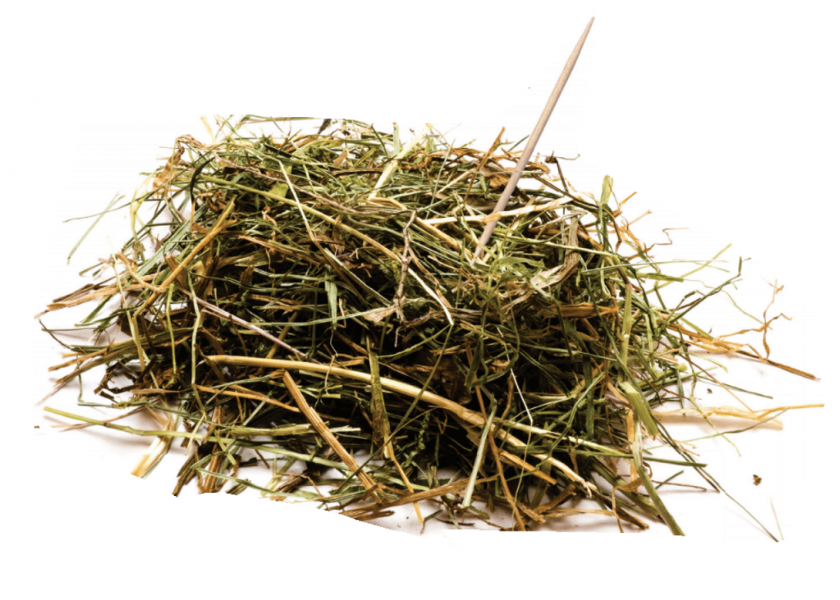Give Dairy Calves a Toothpick

Even when they are fed high milk allowances, preweaned calves need solid feed to foster digestive system development and absorb nutrients more successfully through weaning and beyond, according to world-renowned calf and heifer researcher Dr. Alex Bach.
Bach is a research professor at Catalan Institution for Research and Advanced Studies, Barcelona, Spain. In a presentation at a recent Annual Conference of the Dairy Calf and Heifer Association, he said consistently achieving a weight-gain goal of 2.2 lb. per day at weaning requires that solids intake be fostered well before weaning occurs.
“The act of eating solids is an important, learned behavior, and that ration should contain some forage” suggested Bach. “If the first-time calves see forage is at weaning, they will select against it.”
The quantity, quality, and composition of that forage all are important factors. Bach recommends offering 5% to 7% chopped straw or poor-quality (60% to 65% NDF) grass hay along with high-protein (22%), high-starch (40% to 42%) starter grain, and making it available to calves as early as 3 days of age.
Why Lower Quality Is Better
Bach prescribes relatively stemmy, lower-quality chopped forages for young calves because they promote rumen development without displacing starter consumption. He cited a study in which better-quality alfalfa was compared to chopped straw. The alfalfa group did not eat as much starter grain as the straw group and grew less than controls, but calves in the straw group consumed about 30% more starter.
He described a 1-1/2” to 2” chop length of high-fiber forage as a perfect “toothpick” to clean out particles between the finger-like papillae that line the rumen and absorb nutrients.
“When no – or better-quality, more digestible – forage is fed, feed particles settle in between the rumen papillae,” Bach explained. “There, they ferment and induce papillae to form a tough layer of keratin. This keratin build-up interferes with papillae function and absorption of nutrients.”
By providing the toothpick of tough, scratchy forage, keratin build-up is prevented, allowing for a healthier rumen wall and more efficient digestion. In one study, the expression of monocarboxylate transporter 1 (MCT1), which plays a major role in transporting volatile fatty acids from the rumen to the blood, was four times greater in calves fed chopped straw compared with no forage.
Developing a clean, healthy, highly absorptive rumen wall not only serves calves well through the transition to weaning, but it also sets heifers up for more effective and efficient digestion throughout their lactating lifetimes. The same is true for animals destined for the feedlot.
“Introducing forage in this manner early in life may lead to shorter rumen papillae, but that is not detrimental to rumen function,” Bach noted. “Having shorter papillae actually means the ‘valleys’ they create are not as deep, so there is less likelihood that feed particles will accumulate between them.”
Forages of longer lengths, or unchopped altogether, are more likely to stay trapped in the rumen due to slow digestion and will decrease intake.
“The biggest trick with forage in calf rations is physical not chemical,” Bach stated. “By feeding it correctly preweaning, we are promoting both better eating behavior and rumen development. Forage at this stage is barely digested, thus the nutrient supply form forage is almost negligible.”
Not So Fast
At post-weaning, Bach advised keeping forage levels at 5% to 7% of total solids initially, with a gradual increase over several weeks. He said fermented forages should not be introduced until calves are 180 to 200 days old.
He’s also not a fan of high-fiber starter pellet formulations. “Preweaned calves cannot digest that much fiber at that age due to an immature rumen microbiome,” said Bach. “They need energy and protein via their starter grain ration, along with the rumen scratch from properly chopped, low-nutrient forage, to develop correctly.”







